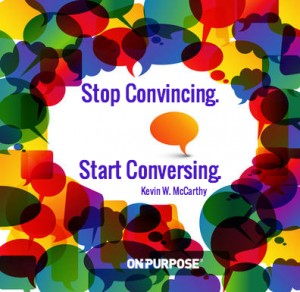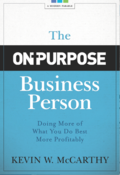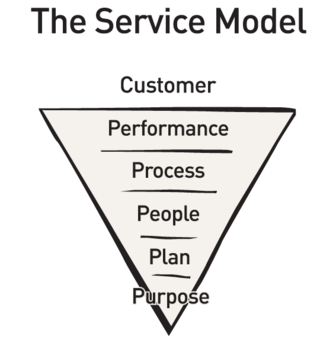How would you like to have a 42% improvement in your overall well-being? Keep reading!
The more and faster that things are changing for you, the more you want that which is holding fast — that which is unchanging … your purpose.
Your purpose is permanent and unchanging. It can sustain you through your tough shift. There is remarkable hope within your current means and circumstances. As much as you may think differently, you lack nothing to live your life on-purpose.
Jihad, national politics, economies, and technologies are in a rapid swirl of seeming chaos that make it hard to wrap one’s mind around what is really happening in society and life. Context and meaning can become washed over in a sea of 24/7/365 news cycles, disappointments, and difficulties. We wonder:
- Who can be trusted?
- How will these changes affect my life, my job, and my family?
- Will I have gainful employment?
- Does anyone really care?
Do you find yourself thirsting for answers and insights, but find your daily time and energy is like seeping water cupped in your hands just long enough to get a quenching sip of life through yet another day? Laying your head on your pillow at night, you’ve likely poured yourself into yet another day of routines and problems, yet you reflect if any progress has really been made.
Time is the currency of our lives and too many of us are spending our time instead of investing it. We wonder, Is redemption and restoration possible? Is it too late for me?
Take heart!
Being in a tough shift is one thing. Thriving in the midst of one is another. Regardless of whether your tough shift is in your personal life or your work life or both, the essential responsibility for safe and productive passage rests with one person — you! Nothing can replace or is as powerful to prepare you to prosper as assuming personal leadership of your life. The nuclear core of being true to who you are rests in knowing your 2-word purpose statement and then making a decision and taking actions in alignment with it — to be on-purpose.
Since the late 1980s we’ve been helping individuals and organizations to surf with success all kinds of waves and tough shifts by simply helping them to find answers to four “Who Am I?” questions and then design plans and actions to live into them:
- Why am I here? (purpose)
- Where am I going? (vision)
- How will I get there? (missions)
- What’s important? (values)
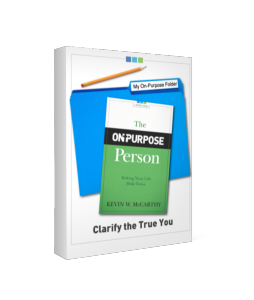
Absent answers to these questions, we’re practically, emotionally, and spiritually adrift. Regardless of the endeavor when our mind, body, and spirit are disturbed we’re at a strategic disadvantage. This impediment to our leadership directly ripples from our life to those around us. When we’re not who we were intended to be and become, everyone pays some price — our spouses and family, our co-workers and partners, and our fellow citizens. The old adage goes, “If you aren’t carrying your end of the log, then someone else is.”
Invest your time to actually think about your life and to answer the “Who Am I?” questions. Write down your thoughts, refine them, and review them. A survey of our clients who have done this work reported a 42% improvement in their overall well-being.
Tough shifts are neither positive or negative — they just exist. How we react and respond determines their influence. Holding fast to our purpose produces strength and resilience so we’re less susceptible to the ever transforming ebb and flow of the tough shifts.
——————
Answers to your “Who Am I?” questions for your business or your life are but a phone call (407.657.6000), email, or online order away. At On-Purpose Partners we provide a variety of products and services that include:
- Business Advisory Services: Articulation of Purpose, Vision, Mission, and Values plus business design and planning
- One-on-One Coaching: Individual help to become a better leader of your life and/or business
- Books: The On-Purpose Person, The On-Purpose Business Person, and FIT 4 Leading

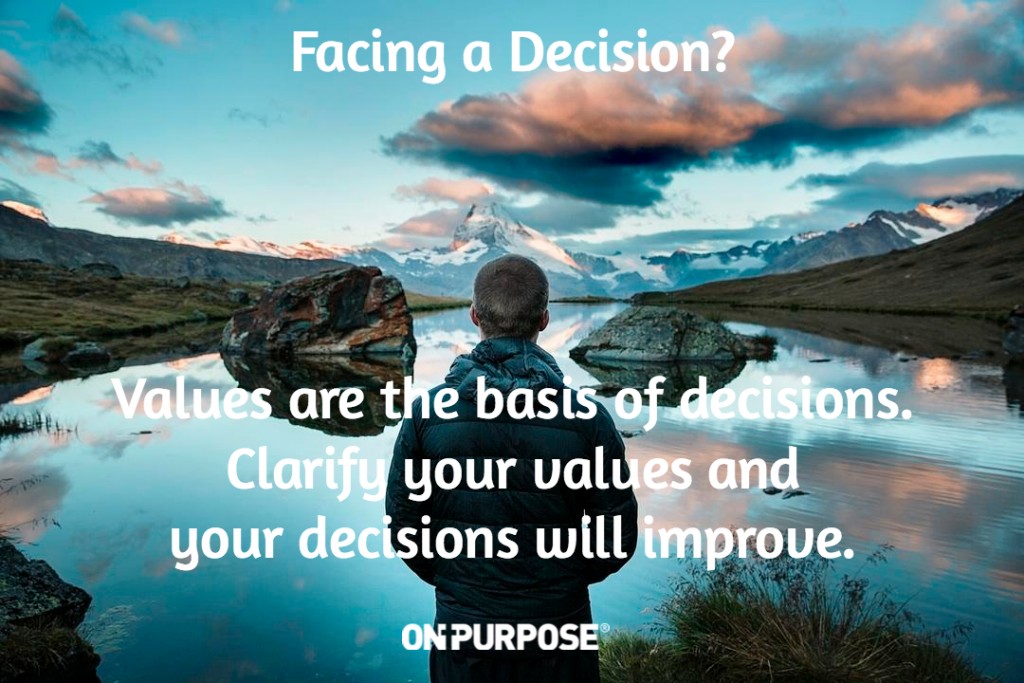 As a person or an organization matures, decisions need to be distributed across the team to those closest to the choice. In the absence of clearly articulated and communicated values (and a 2-word purpose) even the most well-intended person makes ungoverned decisions — typically on emotion rather than values.
As a person or an organization matures, decisions need to be distributed across the team to those closest to the choice. In the absence of clearly articulated and communicated values (and a 2-word purpose) even the most well-intended person makes ungoverned decisions — typically on emotion rather than values.